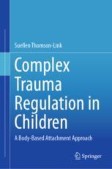Search
Search Results
-
Filled Pauses Produced by Autistic Adults Differ in Prosodic Realisation, but not Rate or Lexical Type
We examined the use of filled pauses in conversations between homogeneous pairs of autistic and non-autistic adults. A corpus of semi-spontaneous...

-
Text Comprehension Dynamics: Time Parameters
Comprehension of a text is a process extending in time. Hence, time parameters may serve as indicators of process features that allow insights into...
-
Fluency in L2: Read and Spontaneous Speech Pausing Patterns of Turkish, Swahili, Hausa and Arabic Speakers of English
Language learners’ actual speech performances constitute an essential aspect of studies on second language learning and teaching. Although there is...

-
Short- and long-term influences of repeated speech examples on segmentation in an unfamiliar language analog
Because segments in fluent speech (e.g., words and phrases) are not reliably separated by pauses, a key task when listening to an unfamiliar language...

-
How ready is speech-to-text for psychological language research? Evaluating the validity of AI-generated English transcripts for analyzing free-spoken responses in younger and older adults
For the longest time, the gold standard in preparing spoken language corpora for text analysis in psychology was using human transcription. However,...
-
Vocalizations
Vocalics or paralanguage is the subdiscipline of body language focusing on the vocal elements (e.g., pitch, volume, tone). Listeners usually judge...
-
A Sco** Review of Sex/Gender Differences in Social Communication Skills and Behaviors of Autistic Youth—Are Sex/Gender-Specific Interventions Needed?
Despite a known male dominance (4:1) in autism diagnoses, there remains a lack of clarity surrounding sex/gender differences in the social...

-
A (further) test of spontaneous serial refreshing in verbal and spatial working memory
Working memory is the cognitive system that keeps a limited amount of information temporarily accessible for ongoing cognition. One proposed...

-
One fish, uh, two fish: Effects of fluency and bilingualism on adults’ novel word learning
Listeners utilize speech disfluencies to anticipate novelty in spoken language, but little is known about how speech disfluencies impact novel word...

-
An Irreversible Effect of Response Cost on Human Fixed-Interval Responding
Two experiments were conducted to examine the effects of point-loss response cost on the responding under fixed-interval (FI) schedules in humans....

-
Reading Strategies to Improve Reading Skills of Disabled Students
The considerable body of research showed that students with disability (SWD) have severe difficulties in at least one component of reading, no matter...
-
Brief Report: Linguistic Mazes and Perseverations in School-Age Boys with Fragile X Syndrome and Autism Spectrum Disorder and Relationships with Maternal Maze Use
Autism spectrum disorder (ASD) and fragile X syndrome (FXS) are neurodevelopmental disorders with overlap** pragmatic language impairments. Prior...

-
Linguistic features of spontaneous speech predict conversational recall
Empirical studies of conversational recall show that the amount of conversation that can be recalled after a delay is limited and biased in favor of...

-
Validation of an Online-Gamified version of Epstein's Insight Tasks with Humans
This study sought to replicate a model developed to explain the problem-solving process through insight with human participants. This process happens...

-
Factors that Facilitate or Impair Kinesic and Vocalic Nonverbal Behaviors During Interpersonal Deception
This chapter presents results of an original interactive experiment in which truthful or deceptive interviewees were highly motivated (or not) and...
-

-
Specific Language Impairment, Autism Spectrum Disorders and Social (Pragmatic) Communication Disorders: Is There Overlap in Language Deficits? A Review
Analysing language characteristics and understanding their dynamics is the key for a successful intervention by speech and language therapists (SLT)....

-
Self Addressed Questions and Filled Pauses: A Cross-linguistic Investigation
There is an ongoing debate whether phenomena of disfluency (such as filled pauses) are produced communicatively. Clark and Fox Tree (Cognition...

-
Social Co-regulation of the Autonomic Nervous System Between Infants and Their Caregivers
Infants communicate physiological needs to caregivers and are sensitive to caregivers’ cues, with both dyadic partners integrating their brain and...
-
Safety and the Therapeutic Management Strategies for Carers and Therapists
In a healthy attachment relationship, the caregiver assists their child with regulation, by creating a secure base of safety. The caregiver’s body...
